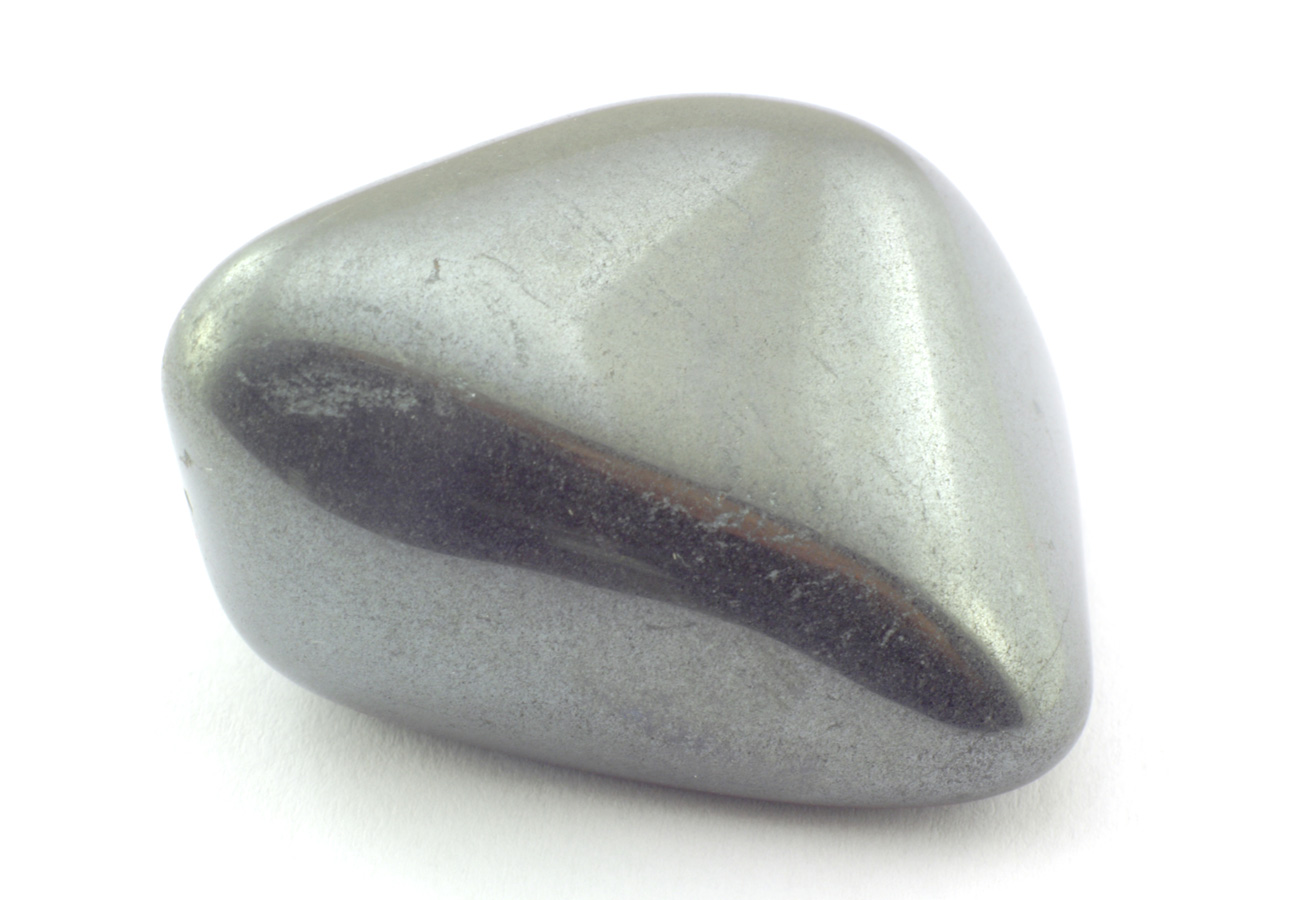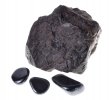Hematite usually occurs as massive, opaque material withg a metallic lustre, showing a blood-red colour when cut into thin slices. However, it can occur as short, black, rhombohedral crystals, and may have iridescent surfaces. When arranged like the petals of a flower, hematite is called an iron rose. Shiny crystals may be called specular hematite, a name derived from their traditional use in mirrors.
Main deposits are in igneous rocks in North America (Lake Superior and Quebec), Brazil, Venezuela, and England. Iron roses are present in Switzerland and Brazil; cuttable material in England, Germany, and Elba.
Powdered, it may be used being an artist’s pigment or for polishing. In the past it was used to protect the wearer from bleeding.





























Leave a Reply
You must be logged in to post a comment.